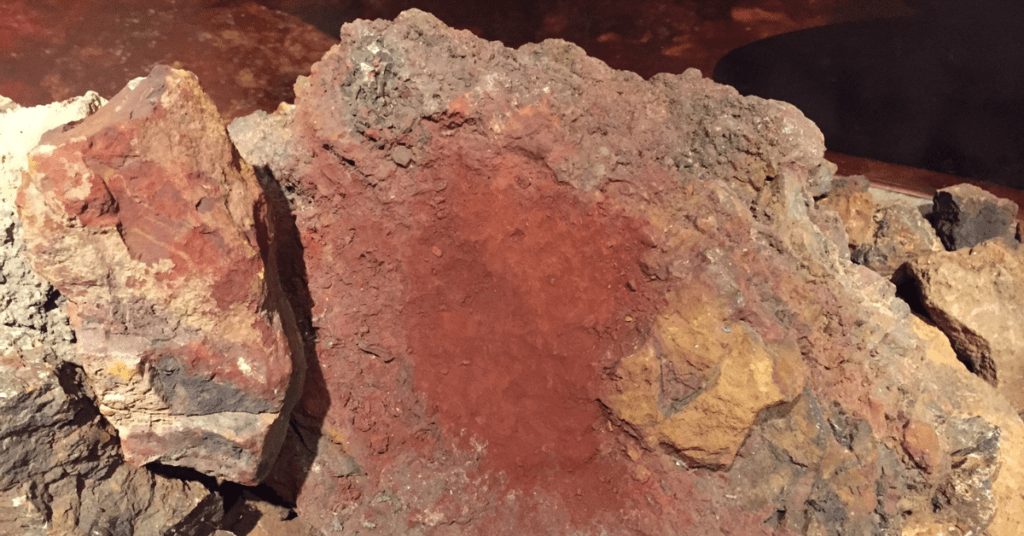In an ever-evolving global economy, the steel and iron ore industry stands as a testament to resilience and adaptability. An essential backbone to numerous sectors – from construction and automotive manufacturing to aerospace and energy. The industry continually forges new paths, embracing technological advancements and sustainability trends. But how many jobs are available in steel/iron ore?
In this article we’ll explore the multifaceted employment landscape of this vital industry. We’ll sift through the complexities, moving beyond simple headcounts to analyze the diverse range of roles, the influence of technology and global economics, and the exciting potential for career growth within this robust industry.
Jobs Available In Steel/Iron Ore
Quantifying the exact number of jobs available in steel/iron ore at any given time can be quite complex. This is because the industry is a dynamic entity, deeply interwoven with the global economy and subject to fluctuations based on a multitude of factors. These include global supply and demand dynamics, technological advancements, trade policies, economic health, and even geopolitical events.
As of September 2021, from the U.S. Bureau of Labor Statistics indicated that there were around 83,000 workers directly employed in iron and steel mills and ferroalloy manufacturing in 2020. However, this figure only captures a portion of the industry. If we expand the scope to include those involved in the manufacture of steel products from purchased steel, the number grows significantly. The American Iron and Steel Institute estimated that over 2 million jobs, both directly and indirectly, were tied to the American steel industry.
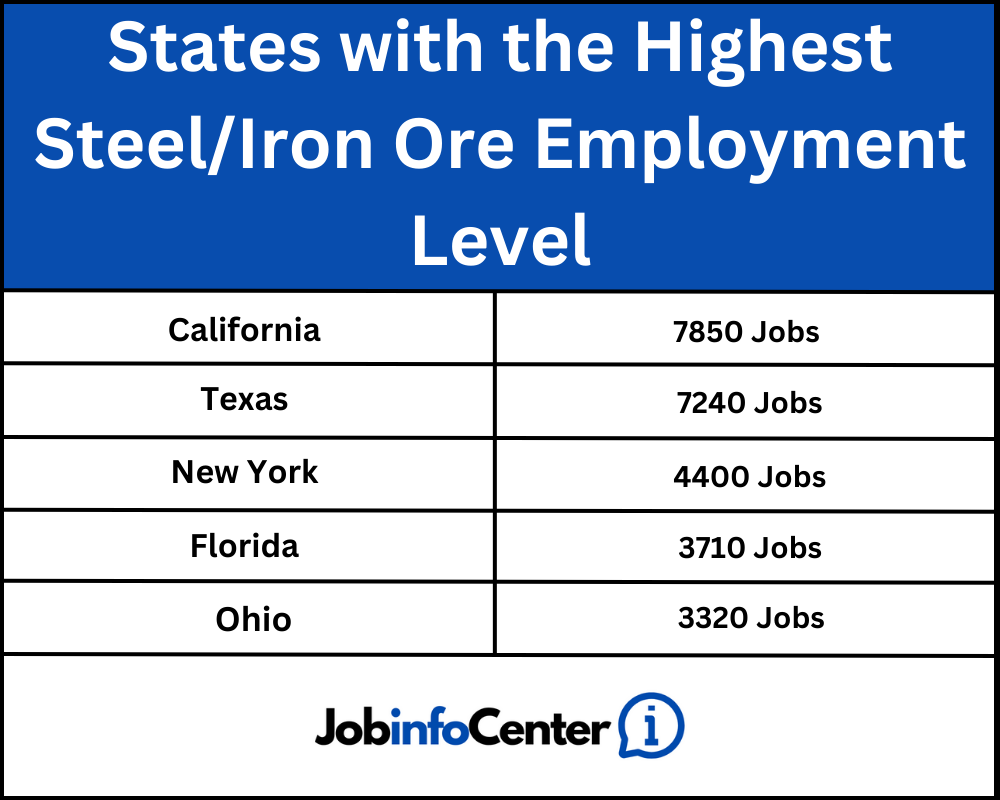

Looking at the industry more globally, the World Steel Association reported that the steel industry employed more than 6 million people worldwide. This encompasses a vast range of roles, from mining and metallurgy to manufacturing, sales, and distribution.
However, it’s crucial to understand that these figures can change rapidly. Technological advancements and shifts towards more sustainable practices are constantly shaping and reshaping the industry’s landscape. For example, while automation may reduce the number of certain traditional roles, it simultaneously opens up opportunities for new, specialized positions in areas like digitalization, automation, and data analysis.
How Much Do Steel Workers Get Paid?
Diving into a career in the steel or iron ore industry often leads to the critical question: how much do steelworkers earn? The answer is not straightforward, as it depends on a range of factors such as the specific role, the worker’s experience and qualifications, the geographical location, and the economic health of the industry at any given time.
In September 2021, the U.S. Bureau of Labor Statistics stated that the median annual wage for metal machine workers, which includes metal fabricators and many who work in steels mills, was $36,990 in 2020. This, however, is a broad category and the compensation for steelworkers specifically may be different.
Skilled positions, such as metallurgical engineers or plant supervisors, generally command higher salaries. For instance, the median annual wage for materials engineers, which would include those specializing in steel and other metals, was $93,360 in 2020.


On the other hand, entry-level positions or jobs that require less specialized training might offer lower compensation initially, but they also often provide on-the-job training and opportunities for advancement.
Geographic location is another key factor influencing wages. In areas where the cost of living is higher, or where the demand for steelworkers is particularly strong, wages can be expected to be higher.
It’s important to remember that these figures represent snapshots in time and the situation can change based on economic conditions, technological advancements, supply and demand dynamics, and other factors.
In addition to the base salary, many steelworkers are part of unions, which can offer additional benefits such as health care, pension plans, and collective bargaining power.
How Many Steelworkers Are There In The US?
Pinpointing the precise amount of steel workers in the United States can be quite difficult. This is largely due to the multifaceted nature of the steel industry, which extends far beyond a singular, unified sector. The term ‘steel workers’ encompasses a wide spectrum of roles, from those directly employed in iron and steel mills to others engaged in crafting products from procured steel.
As per data from the U.S. Bureau of Labor Statistics, roughly 83,000 individuals were directly employed in iron and steel mills and ferroalloy manufacturing. However, a more comprehensive view of the steel industry, which includes the manufacturing of steel products from purchased steel, significantly increases this number. The American Iron and Steel Institute, projected that the steel industry contributes to over 2 million jobs, both directly and indirectly.
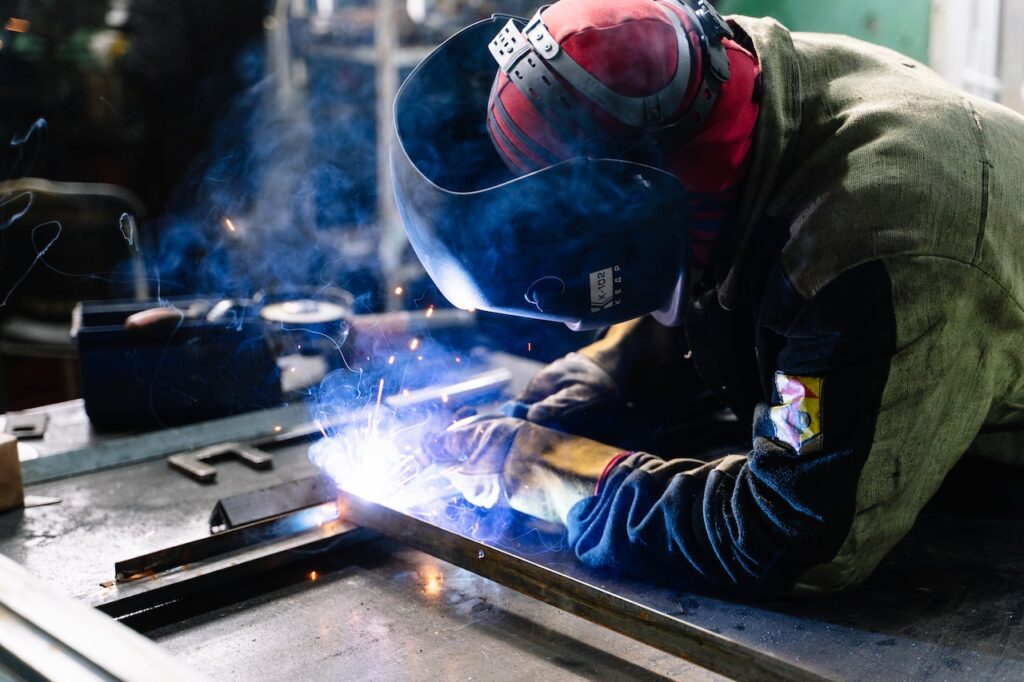

However, it’s crucial to understand that these numbers are not static. The steel industry is part of a broader global economic environment and is influenced by a variety of elements. Fluctuations in global supply and demand, advancements in technology, shifting trade policies, and overall economic health can all affect employment figures in the industry.
Equally significant is the ongoing technological transformation within the industry. As the processes of making steel become more automated and efficient, there could be a decline in certain traditional roles. Yet, this same trend kindles the need for a novel breed of steel worker – one equipped with skills in areas such as automation, digitalization, and sophisticated manufacturing technologies.
Is Steel/Iron Ore A Good Career Path?
Embarking on a career path in the steel or iron ore industry can indeed be a rewarding decision, offering a variety of opportunities for professional growth. The industry’s significance in the global economy and its intersection with multiple sectors, from construction and automotive manufacturing to aerospace and energy, make it a fertile ground for diverse career paths.
Perhaps one of the most compelling aspects of pursuing a career in this industry is its dynamism. As the industry evolves in response to global trends, technological advances, and policy shifts, so too do the opportunities within it. While the industry may have once been dominated by roles centered around manual labor, today’s steel and iron ore sector requires a broad range of skill sets.
For instance, the push towards greener and more sustainable practices has opened up avenues for environmental engineers and sustainability experts. Meanwhile the ongoing automation of traditional manufacturing and industrial practices using modern smart technology has increased the demand for roles such as automation engineers and data analysts.


Furthermore, the industry offers potential for long-term job stability. Despite fluctuations in the global economy, the demand for steel remains high due to its wide usage in various sectors. This demand, coupled with the industry’s commitment to innovation and improvement, contributes to its resilience and potential for job security.
Nonetheless, it’s important to understand that like any industry, a career in steel or iron ore comes with its challenges. The sector can be cyclical, with periods of growth followed by downturns. Additionally, the ongoing trend of automation could lead to a decrease in certain traditional roles over time.
Best Paying Jobs In Steel/Iron Ore
Geo-Scientist:
A Geo-Scientist studies the composition and structure of Earth’s rocks, minerals, water, soils and other material to help find resources such as iron ore. They are often involved in exploration for new mineral deposits and precious metals, as well as monitoring land conditions for potential hazards. A geo-scientist typically earns around $66K per year.
Mining Machine Operator:
Mining Machine Operators operate and maintain large machinery used in mining operations. This can include excavators, bulldozers, haul trucks and front loaders. The average salary for a mining machine operator is $58K annually.
Mining Supervisor:
Mining Supervisors oversee the daily operations of a mine site or plant facility. They manage personnel and activities on the site, and monitor safety protocols. Mining Supervisors typically earn around $63K a year.
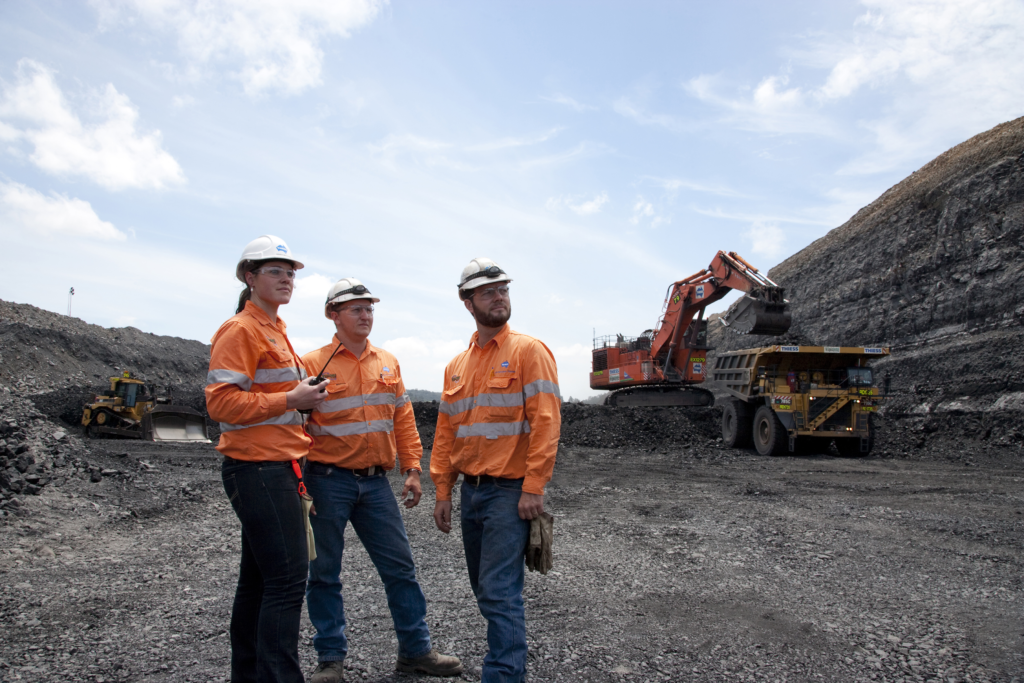

Iron Technician:
Iron Technicians are responsible for fabricating iron components in industrial settings, such as steel mills or manufacturing facilities. This job requires knowledge of welding, metallurgy and machining processes. The average salary for an iron technician is $47K per year.
Steel Erectors:
Steel Erectors use a variety of tools to construct metal buildings and other structures using prefabricated parts. They must have good manual dexterity and be able to read blueprints accurately. Steel erectors typically earn around $54K annually.
Mining Engineers:
Mining Engineers design and implement systems used in mining operations to maximize production, minimize costs and ensure compliance with safety regulations. They also develop plans for mine development and maintenance. The average salary for Mining Engineers is $92K annually.
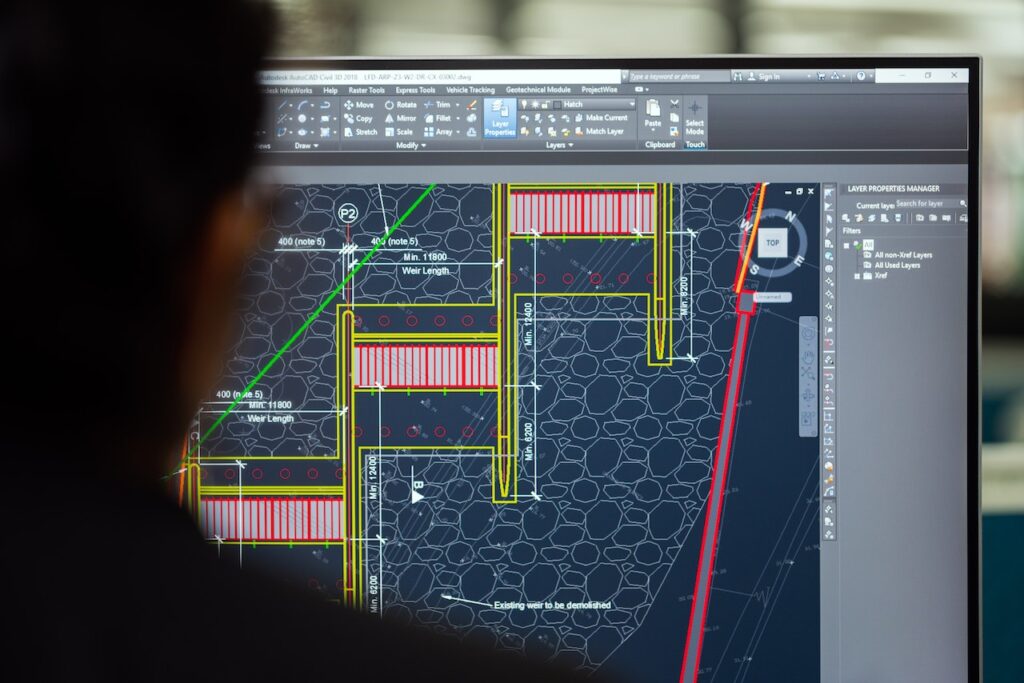

Millwright:
Millwrights specialize in the installation and maintenance of industrial machinery. They must have knowledge in mechanics, hydraulics and pneumatics in order to properly troubleshoot issues and perform repairs. The average annual salary for a millwright is $50,000 per year.
Mechanical Engineer:
Mechanical engineers use mathematics, physics, and engineering principles to develop and enhance products and processes that involve steel or iron ore. Their focus is to meet clients’ needs. Mechanical Engineers earn an average annual salary of approximately $66K.
Steelworker:
Steelworkers use a variety of tools to cut, shape, forge and weld steel components into finished products such as beams, columns and bridges. This job requires physical strength and stamina as well as an understanding of production processes. The average annual salary for a steelworker is $38K per year.


The 3 Largest Steel/Iron Ore Companies In The US?
The American steel/iron ore industry is predominantly dominated by three major corporations. These are U.S. Steel Corporation, Nucor Corporation, and ArcelorMittal USA. Lets take a closer look at each of these companies below:
U.S. Steel Corporation


U.S. Steel Corporation has the largest market share in the U.S., accounting for 21% of the country’s steel production. The company, which was founded in 1901 and has been a key player in the domestic steel industry for many years.
Nucor Corporation


Nucor Corporation, which was established in 1940 under the name Nucor Steel Company, is an American company that provides raw materials for steel production. It holds an 18% market share which is the second-highest in the US after the market leader.
ArcelorMittal USA


ArcelorMittal USA, which is a subsidiary of the massive ArcelorMittal Group and one of the largest steel producers in the US. It holds a 17% market share and prioritizes producing and selling high-quality steel products.
These three companies are significant players in the American steel production industry, contributing to innovation and excellence. Smaller producers also contribute to US steel production and are important for generating employment opportunities and boosting the economy across the nation. All together, they make up a large portion of America’s steel/iron ore exports.
Conclusion
As we’ve explored in our comprehensive article, the jobs available in steel/iron ore span a diverse array of roles, reflecting the industry’s broad reach and its capacity for adaptation and growth. The industry’s evolution, driven by technological advancements and sustainability trends, continually shapes the job market, creating new roles while transforming existing ones.
While the exact number of jobs available can fluctuate due to global economic conditions and industry-specific factors, the steel/iron ore industry’s essential role in global infrastructure ensures its continued relevance and vitality. Ultimately, a career in the steel and iron ore industry offers the opportunity to be part of an industry that is not only integral to our present but is also forging the path to a sustainable future.

